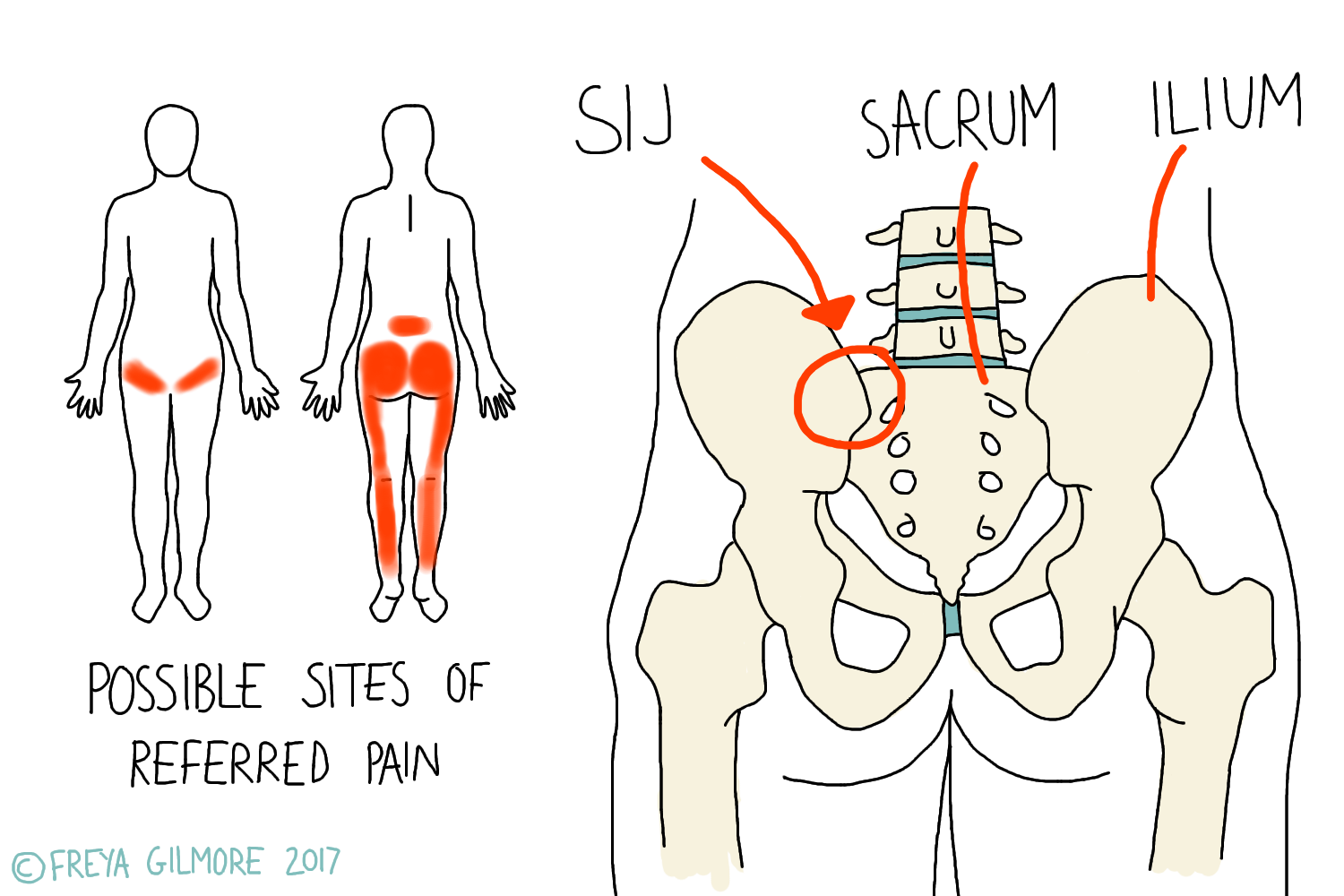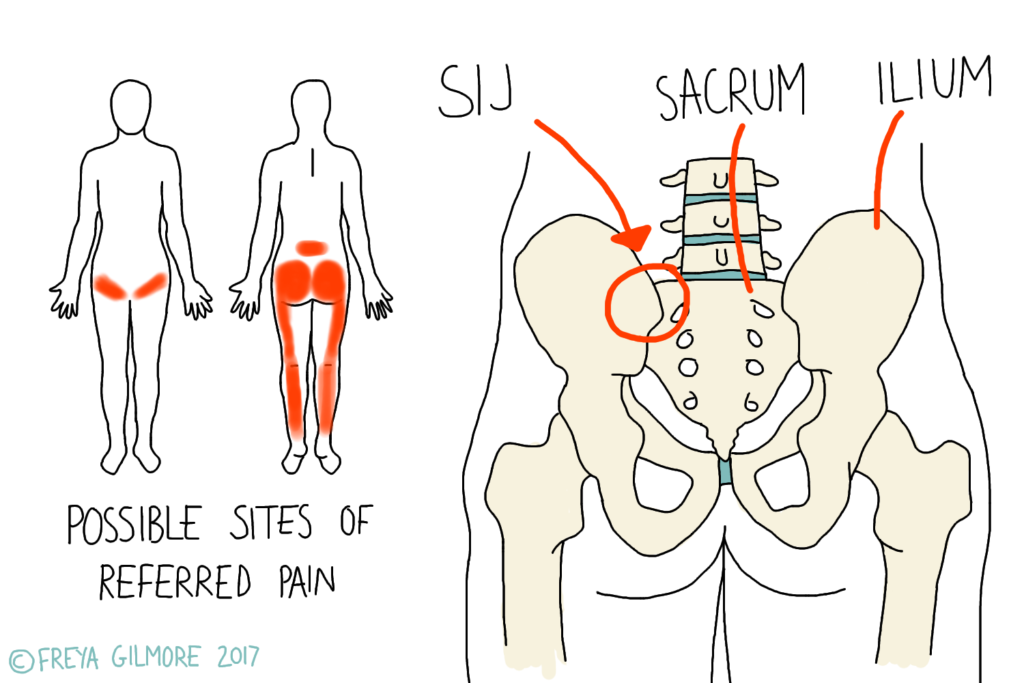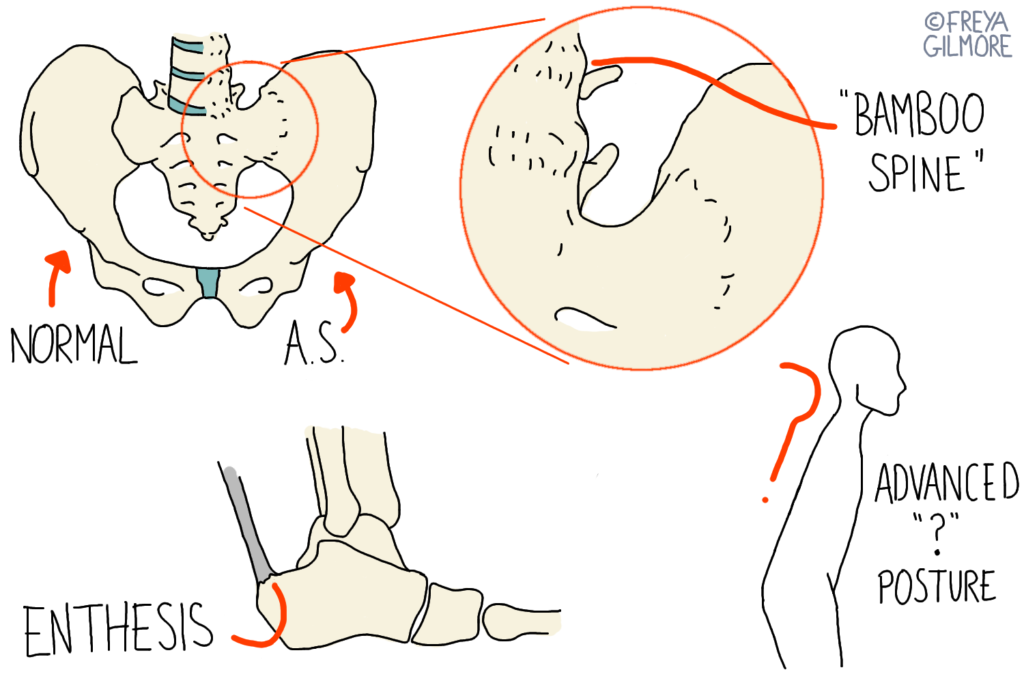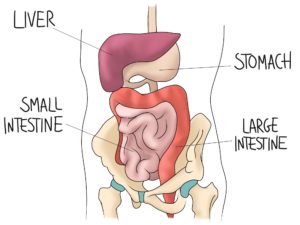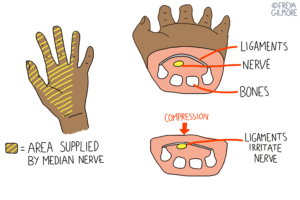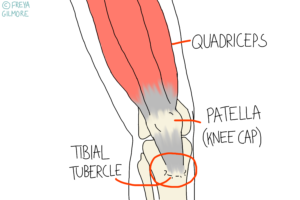The sacroiliac joint, or SIJ, is the joint at the back of the pelvis. It is essentially the joint between the base of the spine and the pelvis. There are two joints, one on either side. With the single joint at the front of the pelvis, the three bones and joints form a ring.
The SIJ is an unusual joint, in that it is large, flat, and not very smooth. This lack of smoothness is in stark contrast to other joints, like the ball and socket of the hip. This is because the SIJ is not made for a lot of movement. In fact, most of the time, its role is primarily support and shock absorption.
The SIJ in Pregnancy
However, during pregnancy the ligaments around the joint become more relaxed. This is preparation for the movement that the pelvis needs to have during childbirth. The relaxation of the ligaments is down to a hormone called relaxin, which peaks in the first trimester but continues to be produced until after birth.
Unfortunately, this change in mobility can cause discomfort. Combined with changes in weight and posture as the bump grows, this can become quite painful. It is important to address this sooner rather than later as it can be managed, if not resolved before birth. If left to progress, the body may respond with inflammation and cause SPD. SPD is dysfunction of the joint at the front of the pelvis, and it can limit the positions that are suitable in birth. It is also more likely to continue after birth than SIJ pain alone.
Back and Leg Pain
You might think that because the SIJ is so low down the back, that very low back pain must be easy to blame on the pelvis. But pain doesn’t always appear right on top of its cause. If the SIJ is truly irritated, you might feel pain in the groin, centre of the back, or from the buttocks down to the calf. It would be easy to mistake this kind of leg pain for sciatica, except it behaves differently. Your osteopath will be able to identify whether your leg pain is local, referred, or nerve pain.
Rheumatic Pain in the SIJ
One underdiagnosed condition that causes pain around the back of the pelvis is AxSpA or AS: Ankylosing Spondylitis.
This condition is related to rheumatoid arthritis, and causes inflammation and fusion of the SIJ. This autoimmune condition leads to chronic pain and stiffness as the joints fuse. Over time this causes a “?” posture to develop as shown in the image above. Unfortunately, as it is so underdiagnosed, many people live with the pain and insufficient treatment. Gentle osteopathic treatment may be beneficial in managing symptoms, but an exercise plan is important, and medication may be the most effective part of a multidisciplinary treatment plan.
Your osteopath has the clinical skills to spot the signs and symptoms of AS/AxSpA, but only a rheumatologist can make a formal diagnosis. This typically requires referral from your GP, but your osteopath can support you through this process with resources from NASS.
If anything mentioned above applies to you, make an appointment today.

